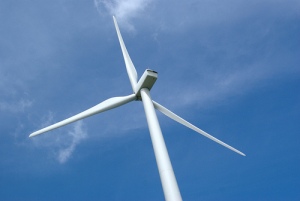Wind Farm Noise Pollution Project Draws Joint Collaboration
Adelaide and Korean researchers will collaborate on a research project investigating wind farm noise pollution.
The Centre for Energy Technology (CET), part of the Institute for Mineral and Energy Resources (IMER) at the University of Adelaide, signed a statement of collaboration with Korea Maritime University’s Centre for Ocean Energy Research and Education earlier this year.
The groups will collaborate with joint research programs, exchange information and actively seek to exchange academic members and researchers for study and research.
One of the first projects the two institutions will work together involves an investigation into the effect of amplitude modulation on wind farm noise pollution. The project, led by Dr. Maziar Arjomandi, is supported by CET’s partnership with Adelaide Airport Limited. This two year project is aimed at numerical simulation of wind farm noise propagation, the behaviour of which in different atmospheric conditions and terrains is still unknown.
In recent years, wind farm developers in Canada, the US, New Zealand and the UK have faced increasing opposition from neighbouring land holders about the location of wind farm turbines triggered by noise pollution concerns.
Noise from wind farms are characterised as either mechanical - from the electrical generation turbine parts, the gear box or generator - or aerodynamic sound generated by pressure variations within the air which fluctuates at acoustic frequencies of between 20 and 20,000 times per second. In wind turbines, fluctuating pressure is caused by flow turbulence - hypothetically if the flow of air into and over the blades could be made completely smooth, noise would disappear. In practice, flow is turbulent hence noise is created. While design improvements have largely resolved mechanical issues, aerodynamic noise is a focus of further research.
It is hypothesized that amplitude modulation enhances the distance that wind farm noise can be propagated, although this effect is heavily dependent on atmospheric properties and wind farm layout and terrain. Amplitude modulation of aerodynamic noise from wind turbines is a phenomenon that occurs when broadband aerodynamic noise is modulated at a frequency, corresponding to the revolution speed of the turbine and the number of blades. This may be experienced as low frequency noise, causing annoyance for some people.
The research aims to ascertain the effect of amplitude modulation of aerodynamic noise in relation to three-bladed 3MW class wind turbines designed for a wind farm under various simulated conditions viewing elements such as farm terrain, atmospheric conditions and turbine positions.
[caption id="attachment_2914" align="aligncenter" width="300" caption="Photo by vaxomatic"] [/caption]
[/caption]
The Centre for Energy Technology (CET), part of the Institute for Mineral and Energy Resources (IMER) at the University of Adelaide, signed a statement of collaboration with Korea Maritime University’s Centre for Ocean Energy Research and Education earlier this year.
The groups will collaborate with joint research programs, exchange information and actively seek to exchange academic members and researchers for study and research.
One of the first projects the two institutions will work together involves an investigation into the effect of amplitude modulation on wind farm noise pollution. The project, led by Dr. Maziar Arjomandi, is supported by CET’s partnership with Adelaide Airport Limited. This two year project is aimed at numerical simulation of wind farm noise propagation, the behaviour of which in different atmospheric conditions and terrains is still unknown.
In recent years, wind farm developers in Canada, the US, New Zealand and the UK have faced increasing opposition from neighbouring land holders about the location of wind farm turbines triggered by noise pollution concerns.
Noise from wind farms are characterised as either mechanical - from the electrical generation turbine parts, the gear box or generator - or aerodynamic sound generated by pressure variations within the air which fluctuates at acoustic frequencies of between 20 and 20,000 times per second. In wind turbines, fluctuating pressure is caused by flow turbulence - hypothetically if the flow of air into and over the blades could be made completely smooth, noise would disappear. In practice, flow is turbulent hence noise is created. While design improvements have largely resolved mechanical issues, aerodynamic noise is a focus of further research.
It is hypothesized that amplitude modulation enhances the distance that wind farm noise can be propagated, although this effect is heavily dependent on atmospheric properties and wind farm layout and terrain. Amplitude modulation of aerodynamic noise from wind turbines is a phenomenon that occurs when broadband aerodynamic noise is modulated at a frequency, corresponding to the revolution speed of the turbine and the number of blades. This may be experienced as low frequency noise, causing annoyance for some people.
The research aims to ascertain the effect of amplitude modulation of aerodynamic noise in relation to three-bladed 3MW class wind turbines designed for a wind farm under various simulated conditions viewing elements such as farm terrain, atmospheric conditions and turbine positions.
[caption id="attachment_2914" align="aligncenter" width="300" caption="Photo by vaxomatic"]
 [/caption]
[/caption]
Newsletter & social media
Join us for a sensational mix of news, events and research at the Environment Institute. Find out about new initiatives and share with your friends what's happening.
